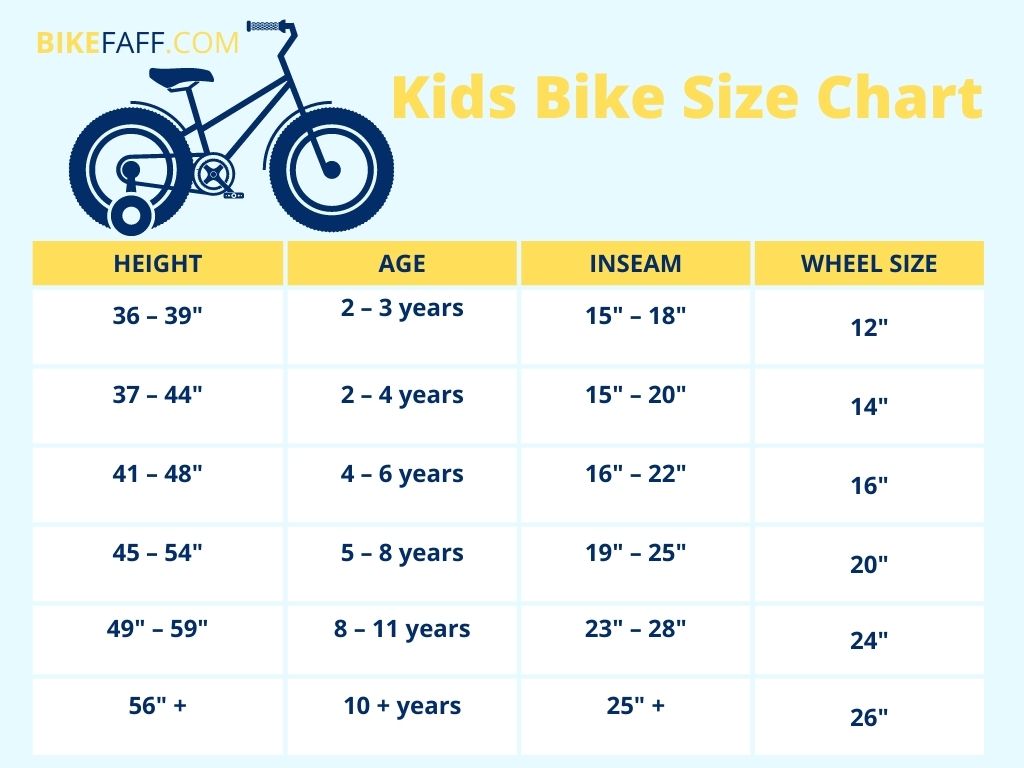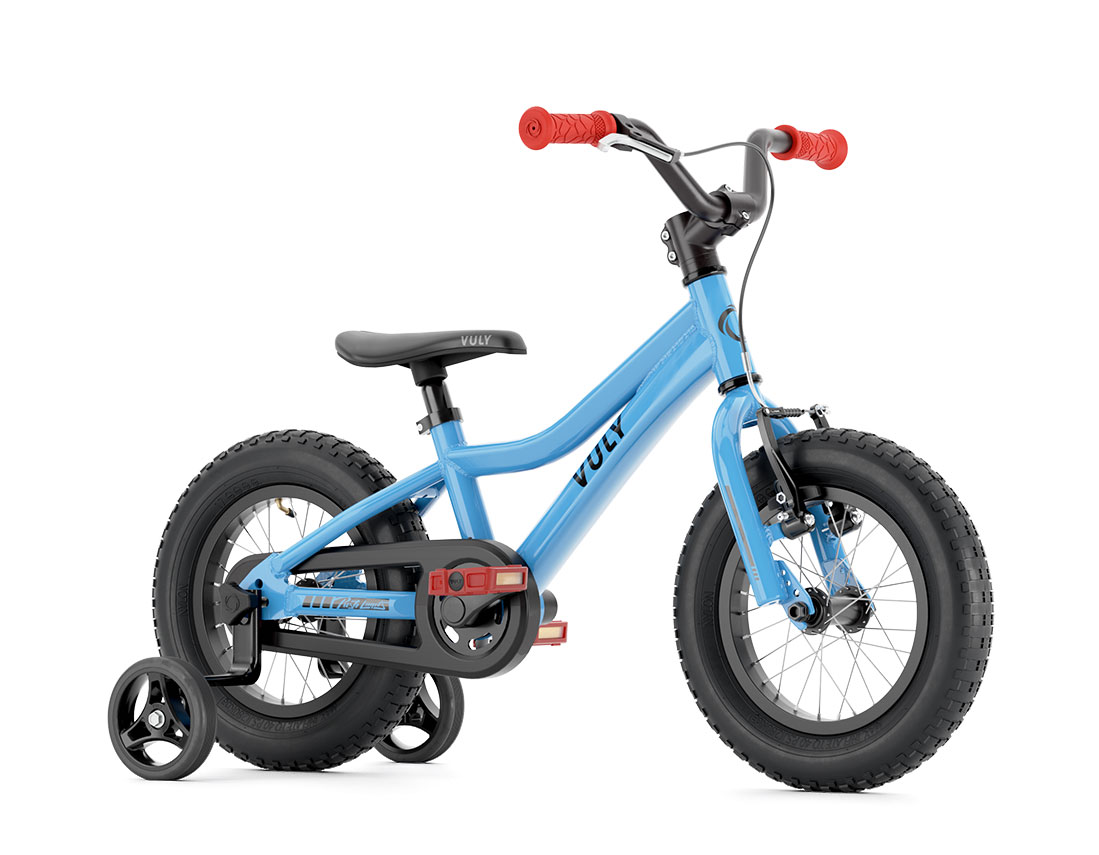Introduction: Understanding the Connection Between Age and Bicycle Size
Choosing the right bicycle size for a child is crucial for their safety, comfort, and enjoyment of cycling. A 12-inch bicycle is an excellent choice for young riders who are just starting their cycling journey. These bicycles are designed for children aged between two and four years old, taking into account their physical development and cycling skills. By selecting the appropriate bicycle size, parents can help their children build confidence, develop balance, and foster a lifelong love for cycling.
What is the Ideal Age for a 12-inch Bicycle?
Typically, children aged between two and four years old can safely and comfortably ride a 12-inch bicycle. This age range is ideal because it aligns with their physical development and emerging cycling skills. At this stage, children have developed sufficient leg strength and coordination to propel themselves forward on a two-wheeler. Moreover, their center of gravity is low, making it easier for them to balance and control the bicycle. However, it is essential to consider each child’s unique development and abilities, as some may be ready to ride a 12-inch bicycle earlier or later than their peers.
Choosing the Right Bicycle for Your Child: Factors to Consider
Selecting the perfect bicycle for your child involves considering several factors beyond their age. These factors include their height, ability level, and personal preferences. Here are some tips to help you make the right choice:
- Age: While age is a crucial factor, it is not the only one to consider. Use it as a starting point and then evaluate other aspects.
- Height: Measure your child’s inseam (the distance from their crotch to the ground) to ensure they can comfortably straddle the bicycle with both feet flat on the ground. A 12-inch bicycle is suitable for children with an inseam between 12 and 17 inches.
- Ability level: Assess your child’s cycling skills. If they are beginners, look for bicycles with training wheels or stabilizers. For more advanced riders, consider models with fewer stabilizers or no stabilizers at all.
- Personal preferences: Involve your child in the decision-making process. Let them choose the color, design, or theme that appeals to them. This will make the bicycle more appealing and encourage them to ride more often.
How to Teach a Child to Ride a 1
Top 12-inch Bicycle Models for Kids: A Review
Choosing the right 12-inch bicycle for your child can be an enjoyable and rewarding experience. Here are some of the best models available, each with unique features, benefits, and drawbacks:
1. RoyalBaby Freestyle Kid’s Bike
The RoyalBaby Freestyle Kid’s Bike is a popular choice, featuring training wheels, a durable steel frame, and a quick-release seat post for easy adjustments. It also includes a bell, water bottle holder, and a rear brake.
2. Schwinn Balance Bike
The Schwinn Balance Bike is designed to help children develop balance and coordination before transitioning to a pedal bike. It features an adjustable seat and handlebars, a lightweight frame, and foam rubber tires that never go flat.
Joystar Kids Bike with Training Wheels
The Joystar Kids Bike boasts a classic design with a steel frame, coaster brakes, and removable training wheels. It comes in various colors and includes a chainguard to protect your child’s clothing.
Strider 12 Sport Balance Bike
The Strider 12 Sport Balance Bike is a high-quality, lightweight option that helps children learn to balance and steer. It features an adjustable seat and handlebars, puncture-proof tires, and a durable frame designed for long-term use.
Cleary Gecko 12″ Kids Bike
The Cleary Gecko 12″ Kids Bike is a versatile choice with a lightweight aluminum frame, easy-to-use coaster and hand brakes, and a low standover height. It is available in several colors and is suitable for various ability levels.
Maintaining and Adjusting a 12-inch Bicycle: Tips and Tricks
Proper maintenance and adjustment of a 12-inch bicycle are essential to ensure your child’s safety and enjoyment. Here are some practical tips and tricks to keep your child’s bicycle in top condition:
1. Regular Cleaning
Clean your child’s bicycle regularly to remove dirt, debris, and moisture. Use a soft cloth and mild soap, and avoid high-pressure water sources that may damage delicate components.
2. Tire Inflation
Check the tire pressure regularly, as underinflated tires can affect balance and performance. Use a bicycle pump with a pressure gauge to ensure the tires are inflated to the recommended PSI (pounds per square inch) level, typically indicated on the tire’s sidewall.
3. Brake Adjustment
Inspect the brakes regularly to ensure they are functioning correctly. Adjust the brake pads if they are too close to or too far from the rim, and tighten any loose components.
4. Chain Lubrication
Lubricate the chain regularly to reduce wear and tear and ensure smooth pedaling. Use a bicycle-specific chain lubricant and follow the manufacturer’s instructions.
5. Seat and Handlebar Adjustment
Adjust the seat and handlebars to fit your child’s size and comfort. The seat should be at a height that allows your child to touch the ground with both feet while seated, and the handlebars should be at a comfortable distance and height for their reach and posture.
6. Periodic Inspection
Conduct periodic inspections of the bicycle’s frame, wheels, pedals, and other components for signs of wear, damage, or looseness. Tighten or replace any damaged or worn-out parts as necessary.
Transitioning to a Larger Bicycle: When and How to Upgrade
As your child grows, they will eventually outgrow their 12-inch bicycle. Here are some signs that indicate it’s time to upgrade and guidance on how to make the transition smoothly and safely:
1. Height and Inseam
If your child’s inseam (the distance from their crotch to the ground) is longer than the minimum recommended inseam for a 12-inch bicycle (typically around 12-17 inches), it may be time to consider a larger bicycle. Additionally, if your child appears cramped or hunched over while riding, a larger bicycle might provide more comfort and room for growth.
2. Ability Level
If your child has mastered the basics of balancing, pedaling, and braking on their 12-inch bicycle and is eager for new challenges, upgrading to a larger bicycle with more features and capabilities might be a good idea. This can help keep them engaged and motivated in their cycling journey.
3. Choosing the Right Size
When upgrading to a larger bicycle, consider the wheel size and frame geometry that best suits your child’s size and ability level. As a general rule, children aged four to six years old may transition to a 16-inch bicycle, while those aged six to nine years old may be ready for a 20-inch bicycle. Always consult the manufacturer’s recommendations and consider having your child test ride the bicycle before purchasing.
4. Gradual Transition
To ensure a smooth transition, consider gradually introducing your child to the larger bicycle. Start by having them practice balancing and maneuvering the new bicycle without pedals, then progress to pedaling and braking. This step-by-step approach can help build confidence and reduce anxiety associated with the upgrade.
5. Safety Gear
Regardless of the bicycle size, always ensure your child wears appropriate safety gear, including a well-fitted helmet, knee and elbow pads, and closed-toe shoes. This gear can help protect your child from injuries and instill safe riding habits from an early age.
Conclusion: The Joy of Riding a 12-inch Bicycle at Any Age
Choosing the right 12-inch bicycle for your child can open up a world of excitement, adventure, and exercise. By understanding the connection between age and bicycle size, you can ensure your child’s safety, comfort, and enjoyment while riding. When selecting a 12-inch bicycle, consider factors such as age, height, ability level, and personal preferences to find the perfect fit. Additionally, maintain and adjust the bicycle regularly to keep it in top condition.
Teaching your child to ride a 12-inch bicycle can be a rewarding experience that strengthens your bond and fosters their independence. With the right safety gear, balance exercises, and pedaling techniques, your child can develop essential skills and confidence on two wheels. As your child grows, monitor their progress and look for signs that indicate it’s time to upgrade to a larger bicycle. A smooth transition can help maintain their enthusiasm for cycling and set them up for a lifetime of healthy, active living.
In conclusion, selecting the right 12-inch bicycle for your child is an investment in their physical, emotional, and social well-being. By providing them with the appropriate tools and support, you can help them discover the joy and freedom of riding a bicycle. Encourage your child to explore, learn, and grow with a 12-inch bicycle that fits their unique needs and abilities, and watch as they embark on an exciting journey of discovery and adventure.






